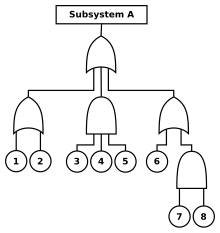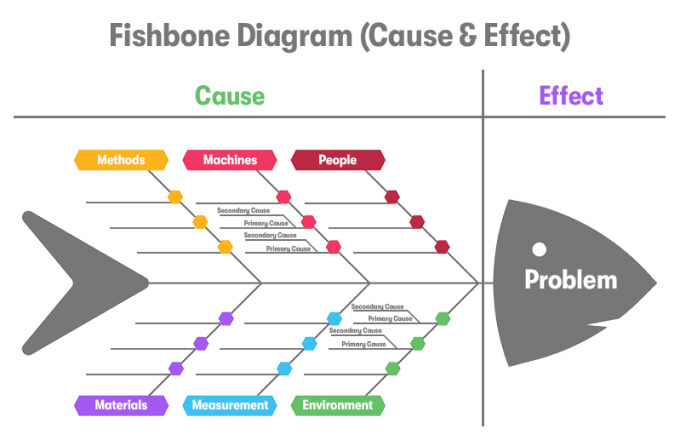Root Cause Analysis
RCA in testing plays a pivotal role in maintaining software reliability. Defects in software can originate from various sources-from misaligned requirements to unoptimized code and environmental inconsistencies. Without an in-depth understanding of these root causes, development teams risk facing recurring issues that waste time, inflate costs, and jeopardize customer trust.
What is root cause analysis?
Root cause analysis (RCA) is a problem-solving method focused on identifying the underlying causes of an issue rather than just addressing its symptoms. In software testing, RCA investigates why defects occur, traces them to their origin, and implements measures to prevent recurrence.
For example, if a test fails due to a misconfigured environment, RCA goes beyond fixing the setup to uncover why the issue occurred-whether due to missing documentation, flawed scripts, or inadequate validation.
RCA uses structured techniques like the Five Whys or Fishbone Diagrams to identify causes related to processes, tools, human errors, or external dependencies.
Key benefits of RCA include:
- Eliminating recurring defects by addressing root causes.
- Improving product quality by enhancing stability and reliability.
- Saving time and resources by preventing repeated fixes.
Importance of root cause analysis in software testing
Root cause analysis shifts the focus from short-term fixes to long-term prevention, offering several key benefits:
- Enhances product quality: RCA addresses systemic issues, such as flawed design or inadequate testing strategies, improving software reliability and stability.
- Reduces recurring defects: RCA identifies the root causes of recurring issues, allowing teams to implement preventive measures and reduce disruptions.
- Saves time and resources: RCA prevents repeated fixes, reducing time and conserving resources by permanently resolving defects.
- Supports continuous improvement: RCA encourages a learning culture, driving improvements in processes, tools, and team practices.
- Boosts collaboration and accountability: Involving multiple stakeholders in RCA ensures thorough analysis and shared responsibility for product quality.
Root cause analysis techniques in testing
- The Five Whys analysis: The Five Whys is a simple yet powerful iterative technique to drill down into the root cause of a problem by repeatedly asking “why.” This method emphasizes exploring cause-and-effect relationships until the fundamental issue is identified.
- Fishbone diagram (Ishikawa Diagram): The Fishbone diagram visually organizes potential causes of a problem into categories, making it easier to identify systemic issues. It is also known as a cause-and-effect diagram.
- Pareto analysis: Pareto analysis helps prioritize issues by focusing on the vital few causes that account for most defects, based on the 80/20 rule.
- Fault tree analysis (FTA): Fault tree analysis is a top-down, logic-based method for identifying potential failure points in complex systems.

Steps to perform root cause analysis in testing
The following steps outline a structured approach to performing RCA in software testing:
Step 1: Identify the problem
- Clearly define the defect or issue that needs investigation.
- Example: “Automated test cases for the login feature are intermittently failing during nightly runs.”
Step 2: Collect data and evidence
- Gather all relevant information about the problem to provide context for the analysis.
- This information includes logs, test execution reports, system performance metrics, and any other diagnostic data.
Step 3: Analyze the problem
- Use RCA techniques to investigate the root cause of the issue.
- Collaborate with team members, including testers, developers, and operations, to ensure a comprehensive analysis.
[blog-subscribe]
Step 4: Identify root causes
- Once analysis is complete, isolate the root causes.
- Ensure the findings are specific, actionable, and free from assumptions.
Step 5: Implement corrective actions
- Develop and deploy fixes to address the identified root causes.
- The corrective actions should be designed to prevent the issue from recurring.
Step 6: Validate the solution
- After implementing a fix, validate its effectiveness by re-running the tests under the same conditions that originally caused the issue.
Step 7: Document and share findings
- Maintain detailed records of the analysis, root causes, and corrective actions.
- Share these insights across teams to promote a culture of learning and continuous improvement.
Step 8: Monitor for recurrence
- Even after implementing corrective actions, continuous monitoring is essential to ensure the issue does not reappear.
- Integrate RCA findings into automated testing or observability systems to catch similar issues early.
Challenges in implementing RCA
Root cause analysis (RCA) is essential but can be challenging to implement effectively in software testing. Here are common obstacles and ways to address them:
- Lack of time and resources: Fast-paced development cycles often prioritize quick fixes, leaving little time for thorough RCA.
Solution: Dedicate time to RCA and highlight its long-term benefits. - Incomplete data: Missing logs or metrics can lead to incorrect conclusions.
Solution: Use robust logging and monitoring tools to ensure accurate data collection. - Complexity of root causes: Interdependencies in complex systems make identifying the true root cause difficult.
Solution: Apply structured techniques like fishbone diagrams or fault tree analysis. - Resistance to change: Teams may resist changes to workflows or practices suggested by RCA findings.
Solution: Educate stakeholders on RCA’s benefits and ease the transition. - Lack of Automation: Manual RCA is time-intensive and prone to errors.
Solution: Leverage automation tools for faster, more accurate analysis.
Best practices for effective RCA
Following these best practices can help teams maximize the impact of RCA and achieve lasting results:
- Clearly define the problem: A precise and concise problem statement is essential to focus RCA efforts.
Example: Instead of “the test failed,” specify, “the login test failed due to a 500 error response.”
Tip: Use detailed logs and metrics to provide context. - Cross-functional teams: Engage all relevant stakeholders, including developers, testers, and operations staff, to ensure a holistic understanding of the issue.
Tip: Facilitate collaborative RCA sessions to promote teamwork. - Prioritize root causes: Focus on resolving high-impact root causes that can prevent multiple issues.
Tip: Use Pareto analysis to identify the vital few causes responsible for the majority of defects. - Integrate RCA into the testing workflow: Make RCA a standard part of your quality assurance process, especially during post-mortems and retrospective meetings.
Tip: Document RCA findings and share them with the team. - Use automation: Leverage automated tools for data collection, defect analysis, and monitoring to streamline the RCA process.
- Build a knowledge base: Document RCA results and solutions to create a repository of learning for future reference.
Conclusion
Root cause analysis (RCA) is a cornerstone of effective software testing, enabling teams to go beyond quick fixes and address the underlying causes of defects. By identifying and resolving root issues, RCA enhances product quality, minimizes recurring problems, and optimizes testing efforts.
Implementing RCA requires a methodical approach, using structured techniques and fostering collaboration across teams. Despite challenges such as time constraints and complexity, following best practices like clear problem definition, automation, and preventive actions ensures its success.
